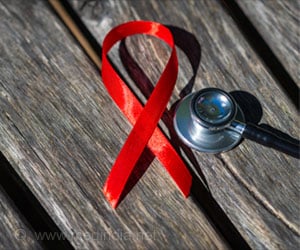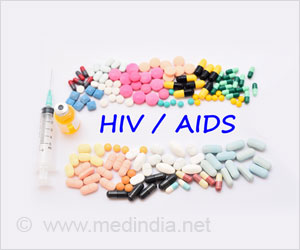The inclusion of a fourth drug to the usual three-drug HIV treatment regimen is not warranted, according to researchers.
The inclusion of a fourth drug to the usual three-drug HIV treatment regimen is not warranted, according to researchers. The fourth drug did not reduce the HIV load or the drug resistance, the new study said. It is published in the August 16 issue of JAMA, a theme issue on HIV/AIDS.
Roy M. Gulick, M.D., M.P.H., of Weill Medical College of Cornell University, New York, presented the findings of the study today at a JAMA media briefing at the International AIDS Conference in Toronto.The current standard of care for initial treatment of human immunodeficiency virus 1 (HIV-1) infection is a three-drug antiretroviral regimen, which can suppress viremia (presence of HIV in the blood), increase CD4 cell counts, delay clinical progression, and improve survival, according to background information in the article. Some researchers have suggested that adding drugs to the 3-drug regimens could improve antiretroviral activity. However, additional drugs increase complexity, the potential for toxicity, and costs, and prior studies comparing 3- and 4-drug antiretroviral regimens have shown inconsistent results.
Dr. Gulick and colleagues conducted a study to determine whether a 4-drug regimen would demonstrate better antiretroviral activity than the standard 3-drug regimen. The AIDS Clinical Trials Group (ACTG) A5095 study included 765 HIV-1–infected patients who had not previously received treatment for HIV-1. The trial was a randomized, double-blind, placebo-controlled study, with enrollment and follow-up conducted from March 2001 to March 2005. The study participants received either the medications zidovudine/lamivudine plus efavirenz (3-drug regimen) or zidovudine/lamivudine/abacavir plus efavirenz (4-drug regimen).
Overall, 26 percent of 382 patients receiving the 3-drug regimen and 25 percent of 383 receiving the 4-drug regimen reached protocol-defined virologic failure; time to first virologic failure was not significantly different between the two study treatment groups. In subgroup analyses, increased risk for virologic failure was seen in non-Hispanic black patients. At 3 years, the HIV-1 RNA level was less than 200 copies/mL in 90 percent of 169 and 92 percent of 156 patients receiving the 3-drug and 4-drug regimens, respectively, and less than 50 copies/mL in 85 percent of 169 and 88 percent of 156 patients.
"We found no significant differences over 3 years between the standard 3-drug regimen of zidovudine/lamivudine plus efavirenz and the 4-drug regimen of zidovudine/lamivudine/abacavir plus efavirenz for the initial treatment of HIV-1 infection with regard to initial virologic response, time to virologic failure, CD4 cell count, adverse events, adherence, resistance mutations at virologic failure, or treatment or study discontinuation rates," the authors write.
"High rates of virologic suppression achieved in this study support current guidelines that recommend 2 nucleosides plus efavirenz among preferred regimens for the initial treatment of HIV-1 infection. Adding abacavir as a fourth drug to the standard initial 3-drug regimen did not change toxicity or adherence but provided no additional benefit," the researchers conclude.
Advertisement











